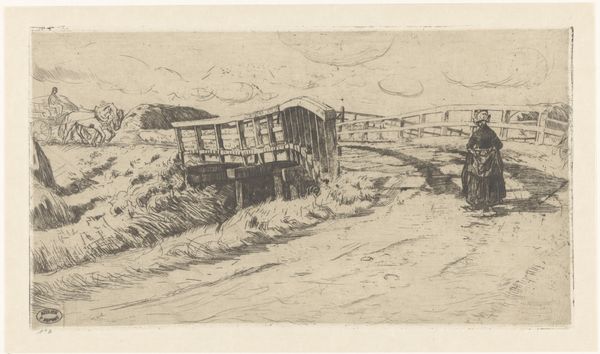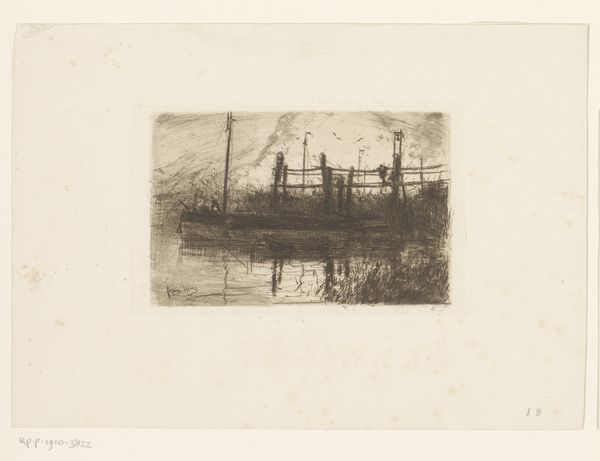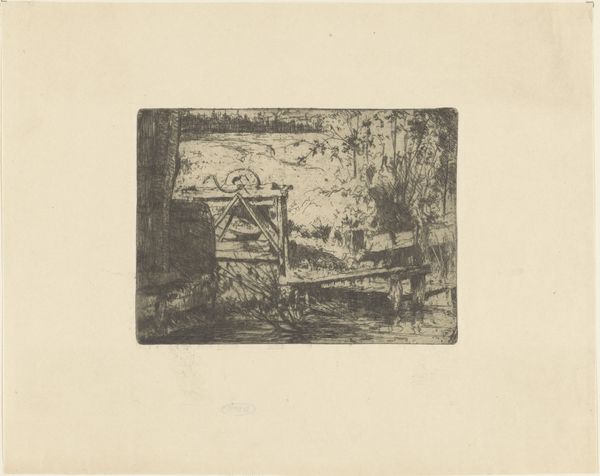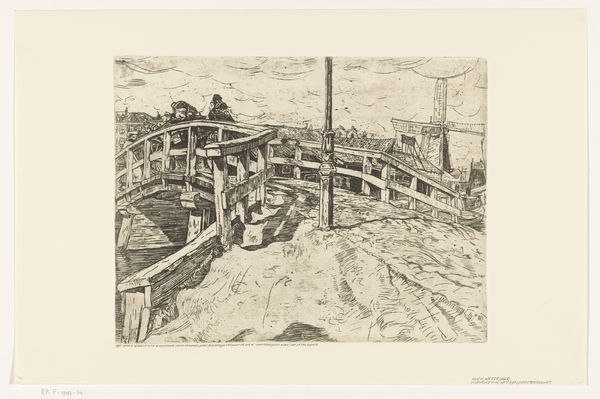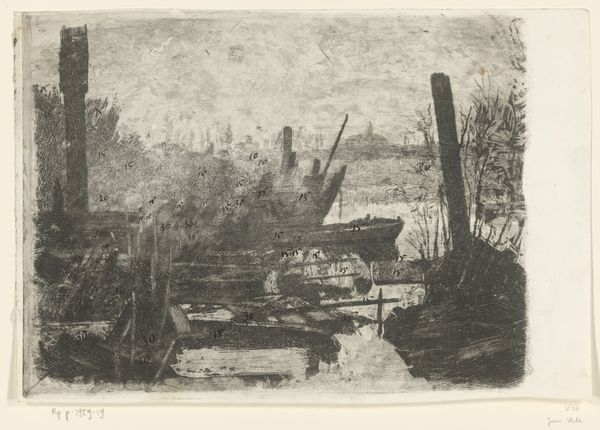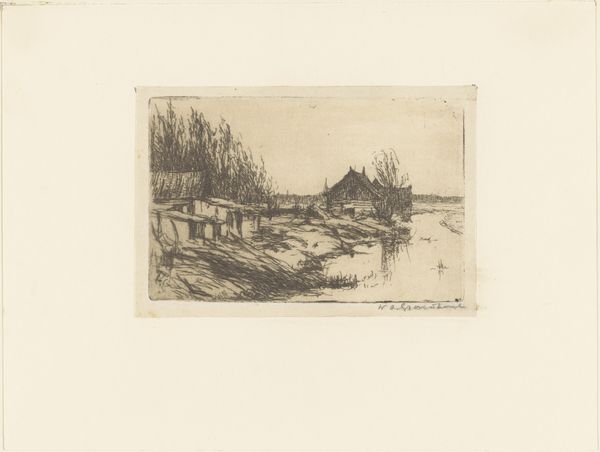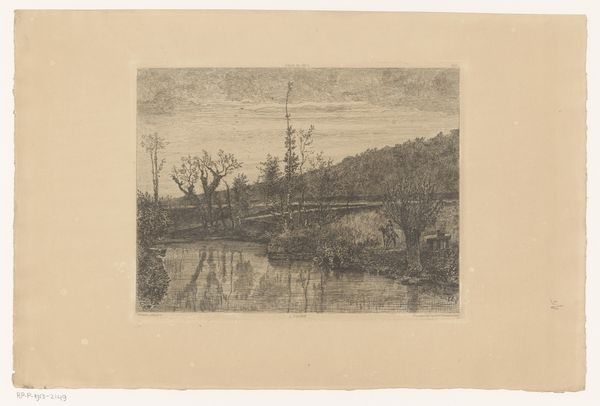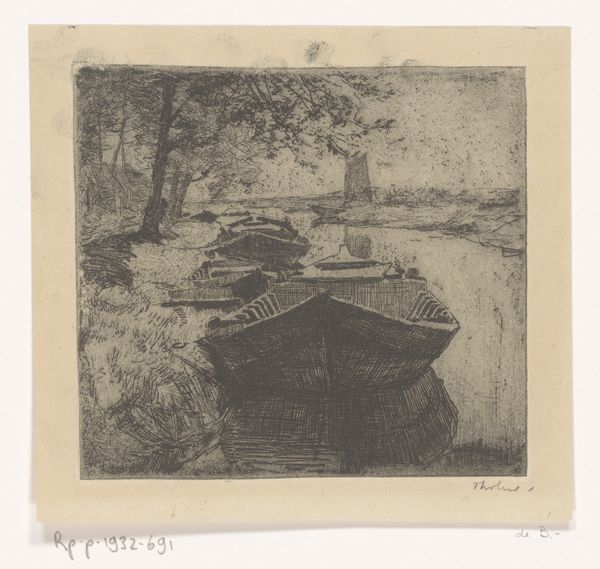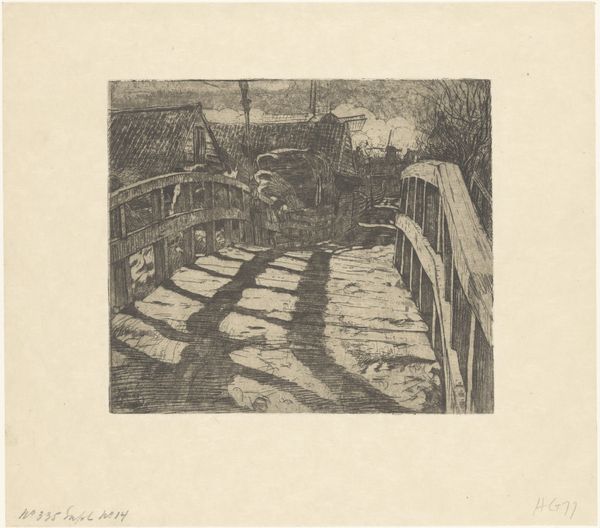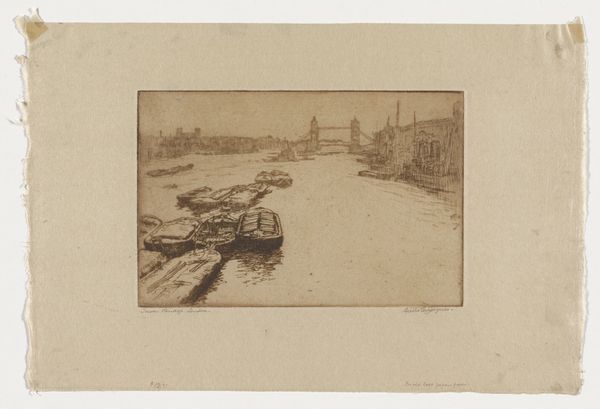
print, etching
# print
#
etching
#
landscape
#
realism
Dimensions: height 183 mm, width 185 mm
Copyright: Rijks Museum: Open Domain
Editor: This is Pieter Dupont’s etching, "Brug in de Baarsjes," from 1895. It's a lovely, understated piece, this rendering of a simple bridge and windmill using such a delicate medium. What strikes you when you look at this work? Curator: What I find most interesting is how Dupont uses realism to depict an ordinary scene, almost elevating the everyday. This was a period where art academies wielded significant influence, setting standards and expectations. How might an etching like this, of such a common subject, have been perceived then? Editor: I imagine it might have been seen as a bit radical, maybe even subversive. An artist focusing on the mundane instead of the grand narratives of history or mythology... Curator: Precisely! It challenges the prevailing academic hierarchies. Furthermore, the choice of printmaking makes this image widely accessible; what do you think that says about the artist's intent? Was it only an exercise of observation and capture of a moment? Or was there a stronger vision? Editor: I wonder if he wanted to democratize art by depicting common sights for a wider audience. Maybe it’s a statement about finding beauty in simplicity? Curator: It is fascinating to imagine how Dupont's artwork speaks volumes about the changing social landscape of the time. Artists began questioning established norms, seeking to represent a more democratic and truthful depiction of life as it was. Editor: I hadn't thought about the social context in quite that way. It is eye-opening how this seemingly simple landscape can have such broader implications when considering the history behind it. Curator: Exactly. Seeing art in the light of history can change your perception of everything!
Comments
No comments
Be the first to comment and join the conversation on the ultimate creative platform.
